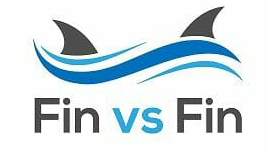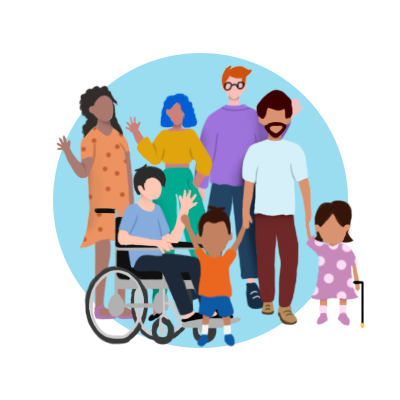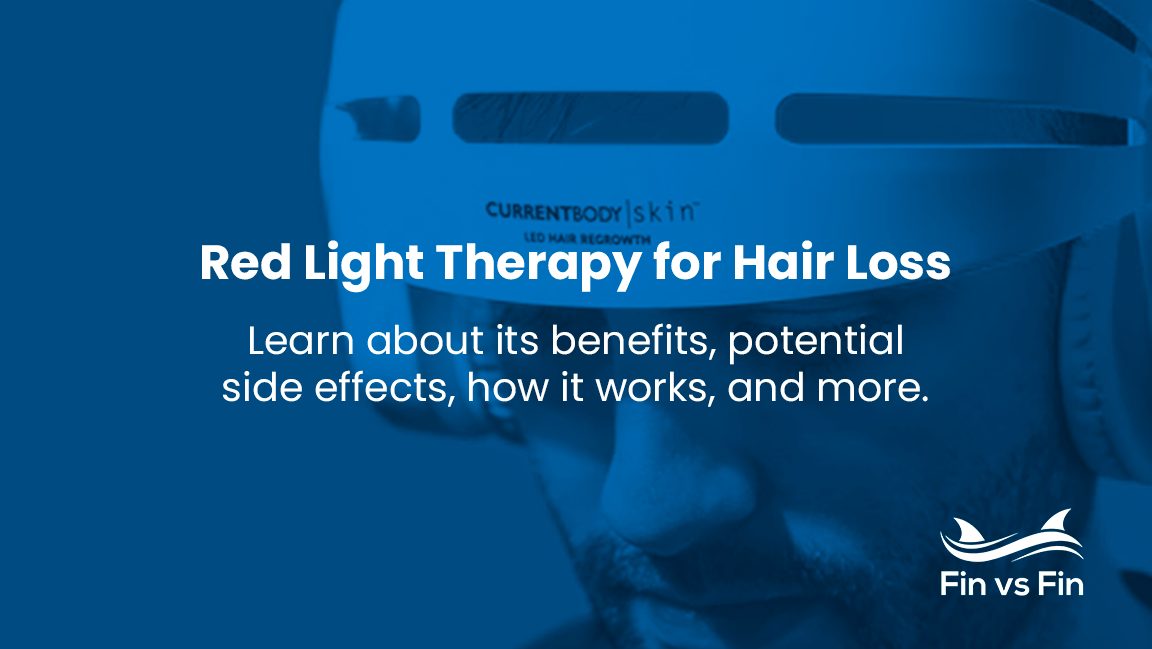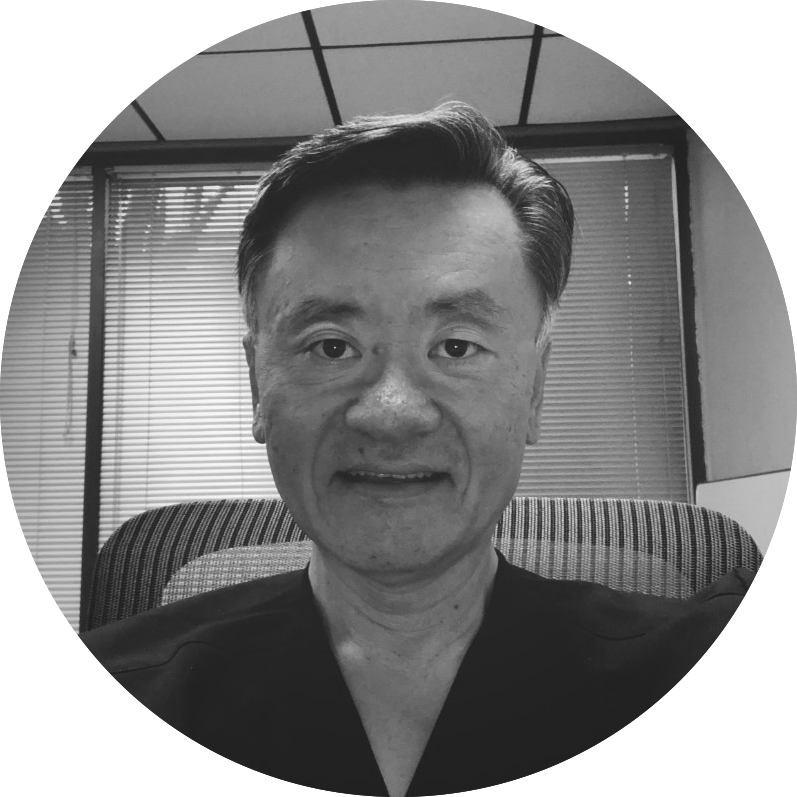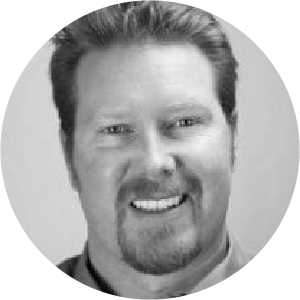- Red light therapy can safely and effectively treat hair loss in some individuals.
- It typically takes four to six months to see results from red light therapy.
- Red light therapy can promote regrowth and hair retention.
- While many types of red light therapy devices are available, it’s essential to select a high-quality, FDA-approved device and follow all of the manufacturer’s instructions.
Red light therapy (RLT), also known as low-level laser therapy (LLLT) or photobiomodulation, is a form of photomedicine that uses red, low-light wavelengths to treat hair loss and certain skin conditions. When this non-invasive treatment is applied to the scalp, it stimulates hair follicles and lengthens the hair growth phase, which can help treat genetic hair loss.
According to clinical studies, low-level laser therapy may take four to six months to show significant results for hair loss. These results can vary depending on the device, consistency of treatment, and degree of hair loss. Some, but not all, red light therapy devices are FDA-approved, making it important to consider all of your options before investing in this device.
In this article, we’ll discuss what to consider before trying red light therapy for hair loss, including its effectiveness, safety, and what to look for in an RLT device. In addition, we spoke with Dr. Jonathan Rick, a board-certified dermatologist, about his thoughts on this type of hair loss treatment and whether it’s worth the investment.

Does Red Light Therapy Work for Hair Loss?
Red light therapy uses light-emitting diodes (LEDs) at certain wavelengths, typically between 650 and 1,200 nanometers (nm), to stimulate the body’s healing and recovery processes.
Red light therapy targets hair loss by:
- Stimulating hair follicles to promote regrowth
- Increasing blood flow to the scalp, ensuring that the follicles receive the oxygen and nutrients required for growth
- Prolonging the anagen, or growth, stage of the hair cycle
- Reducing inflammation in the scalp, which is known to contribute to alopecia
- Supporting stem cell proliferation, which may help regenerate damaged tissue in the scalp
It’s important to note that once hair follicles die, hair regrowth is no longer possible. So, in individuals with scalp trauma or certain genetic conditions involving hair follicle damage, red light therapy may only slow further hair loss. However, by starting red light therapy sooner rather than later, you may be able to protect more hair follicles against permanent damage.
Related reading: What’s the Best Laser Cap for Hair Loss?
Clinical Results
The results of red light therapy for hair loss are supported by numerous clinical studies:
- In a 2021 study, 650-nm red light therapy was found to increase the number of hair follicles in human hair samples. It also prolonged the growth stage of the hair cycle. The study concluded that 650-nm red light therapy plays a role in promoting hair growth and reversing the hair follicle miniaturization associated with androgenic alopecia.
- A 2017 study found that 5% topical minoxidil and LLLT provide comparable results for female pattern hair loss. Both treatments significantly increased the number of regrowing hair follicles after 4 months.
- A 2021 review of studies on the role of LLLT in androgenic alopecia found that LLLT stimulates hair regrowth in both males and females.
Ultimately, red light therapy has been proven effective for androgenic alopecia in individuals assigned male or female when used consistently for several months.

A Word From Our Expert
— Dr. Jonathan Rick
Red light therapy is likely effective. It uses visible-spectrum red light to stimulate hair regrowth. It does not use dangerous frequencies of light. The mechanism of action is a bit quirky and not fully understood, but people posit that it reduces inflammation which then slows hair loss. It is quite expensive and therefore is not my first recommendation. If people are financially comfortable with this option, I still encourage the more tested options, minoxidil and finasteride, first.”
Does red light therapy affect DHT?
Dihydrotestosterone (DHT) is an androgen that contributes to androgenic alopecia by shrinking hair follicles and shortening the growth stage of the hair cycle. Currently, clinical research into the effect of red light therapy on DHT is lacking. However, research has confirmed that red light therapy is effective for androgenic alopecia by prolonging the hair growth cycle and preventing hair follicle shrinkage.
Benefits of Red Light Therapy
Red light therapy provides several benefits for hair loss.
Hair Retention
Red light therapy can help some individuals retain their existing strands to prevent hair loss. This is generally more effective than treating hair loss after thinning or balding has occurred, as dead hair follicles can’t be regenerated.
Hair Regrowth
Red light therapy supports hair regrowth in individuals with androgenic alopecia through several mechanisms of action. It may reverse thinning and shedding in some cases.
Related reading: Best Stem Cell Hair Growth Serums – Do They Really Work?
Non-Invasive Treatment
Red light therapy is a safe, non-invasive treatment with a very low risk of side effects. This makes it a viable option for people who experience side effects from hair loss medications or want to avoid the risks of hair transplant surgery.
Reduced Systemic Inflammation
Red light therapy can reduce inflammation throughout the body, including in the brain. As a result, the treatment can provide neuroprotective benefits and even support the natural release of melatonin, helping to improve sleep quality and mood in some individuals.
How to Use Red Light Therapy for Hair Loss
To use red light therapy for thinning hair, it’s crucial to follow the instructions provided by your device manufacturer, as guidelines can vary. However, consider these general tips for using red light therapy at home:
- Choose a convenient time in your schedule to complete the red light therapy. Consistency is important, so pick a time that you can stick to.
- Wear proper eye protection to prevent eye damage.
- Keep the device at the recommended distance from your scalp.
- Don’t cover the treatment area, as red light can’t penetrate clothing.
- Don’t apply sunscreen to the treatment area, as SPF can reduce the treatment’s effectiveness.
- If you miss or skip a session, don’t make up for it by lengthening the next session. Stick to the recommended length.
- Take photos of the treatment area each week to monitor your progress.
Yes, you can overdo red light therapy, which may increase the risk of side effects and decrease the treatment’s effectiveness.
How Often Should You Use Red Light Therapy for Hair Growth?
There’s some debate over the optimal frequency and duration of red light therapy for hair growth, and it can vary depending on the device. However, general recommendations range from 10 to 30 minutes per session, with 3 to 5 sessions per week. Among users who have shared their personal routines, some people use at-home red light therapy for 10 to 20 minutes, 5 times per week, or every other day for 25 minutes.
It’s always best to stick with the guidelines provided by the device manufacturer.
Best At-Home Red Light Therapy Devices for Hair Loss
Many aestheticians and dermatologists offer professional red light treatments for hair loss. However, these sessions can be costly and time-consuming, requiring a commute to the provider’s office. These constraints can make it difficult to undergo enough red light therapy sessions to achieve your desired results.
At-home red light therapy devices have become extremely popular for hair and skin health. Many home RLT devices have been FDA-approved, indicating that they’re safe and effective for hair loss. These devices are also designed to be simple to use from home, making it easy to add RLT to your normal self-care routine.
How to Choose The Best RLT Device
In choosing a RLT device, consider the following features:
- Design: Narrow your search by looking only at devices that are designed to treat hair loss. Many at-home RLT devices are intended to treat skin concerns, like acne or wrinkles, and aren’t designed to stimulate hair growth.
- Wavelength: The typical wavelength used in RLT for hair loss is 650 nm to 850 nm. Clinical research indicates that 650 nm is the most effective wavelength for stimulating hair growth.
- Light diodes: Different devices contain different numbers of light diodes. Though not as crucial as the wavelength, the number of diodes can impact your RLT experience. More diodes may deliver more red light to the treatment area. But, note that the only diodes that will emit light energy to the cells are the ones positioned directly over your skin.
- FDA approval and other certifications: We’d recommend choosing an RLT device that’s been FDA-approved. This indicates that the device underwent significant testing to meet standards for safety and efficacy. Some devices provide additional certifications, such as a certification of authenticity or SAA certification, indicating that the device is safe to operate at home.
- Cooling system: Red light therapy devices are generally designed with a cooling system to regulate the LEDs and prevent discomfort. Cheaper devices may not provide the necessary power density due to inadequate cooling systems, which can diminish the laser’s performance. RLT device power densities generally range from 20 to 100 milliwatts per square centimeter (mW/cm2).
- Coverage area: Different types of devices cover different areas of the skin. Consider the area that you’d like to target for hair regrowth when choosing a device. Some may target the entire scalp, while others may only treat a small area of skin.
Types of Light Therapy Devices
The main types of light therapy devices for at-home use include:
- Caps: Red light therapy caps or helmets are worn like a hat, making them an easy way to target the entire scalp. You can simply put it on, sit back, and relax. However, as they must be large enough to cover the scalp, RLT caps are more expensive than smaller devices, like wands.
- Wands: Red light therapy wands are designed to be moved across the skin during each session. Unlike RLT caps, wands can’t target the entire scalp at the same time. Additionally, most RLT wands are intended to treat skin conditions. However, wands are smaller, easier to handle, and less expensive than other device types.
- Lamps: Red light therapy lamps vary significantly in size and specs. With some RLT lamps, you can simply sit under the bulbs, allowing the light to reach the entire scalp. However, lamps are less targeted than caps, as it may be difficult to position the diodes a precise distance from your scalp.
- Panels: Red light therapy panels are flat devices that you can use to target the entire body, in some cases. For hair loss, this can make it difficult to ensure that the light reaches the full scalp.
Red Light Therapy for Hair Loss Side Effects
Red light therapy is very unlikely to cause side effects, especially when it’s used as recommended. In clinical studies, it’s been found to have minimal side effects.
Though rare, some individuals have experienced scalp itching, tenderness, and acne.
Red Light Therapy vs. Other Hair Growth Methods
Red light therapy compares favorably to other hair growth methods, including minoxidil and finasteride. As a non-invasive therapy, it’s also safer and more effective for regrowth than surgical hair loss treatments, like hair transplants.
A 2017 study found that red light therapy is as effective as 5% topical minoxidil for female pattern hair loss. However, this study also noted that superior results were achieved when both treatments were combined. Therefore, using both red light therapy and minoxidil may boost the success of your hair loss treatment.
Similar results were achieved when red light therapy was combined with finasteride, another medication for androgenic alopecia. Finasteride is FDA-approved for androgenic alopecia in assigned males and works by blocking the conversion of testosterone to DHT. Therefore, it can work synergistically with RLT to treat hair loss.
Other non-invasive or minimally-invasive dermatologic treatments for hair growth, like dermarolling, microneedling, and scalp massages work by boosting blood flow to the scalp and stimulating the body’s natural repair processes. But, unlike red light therapy, these treatments don’t penetrate the cells and reach the mitochondria, which can impact hair follicle growth.
Related reading: Do Laser Caps Work Better Than Minoxidil or Finasteride?
Does LED Light Therapy Grow Hair?
Red light therapy is a type of LED therapy, meaning that the LED lights emit red light wavelengths.
Different LED colors provide different benefits. Red LED therapy has been found to reduce inflammation, boost circulation, and stimulate hair follicles, making it ideal for use in hair growth treatments.
Summary
Red light therapy is a safe, effective treatment for genetic hair loss. With four to six months of consistent use, it can promote hair regrowth and prevent further hair loss in some individuals.
At-home RLT devices are a convenient way to add this treatment to your normal routine. However, it’s important to select a high-quality, FDA-approved device that’s designed for hair growth and follow all of the manufacturer’s instructions for proper use. Additionally, combining red light therapy with minoxidil or finasteride may enhance the results of your hair loss treatment.
Frequently Asked Questions (FAQs)
Can red light therapy reverse gray hair?
Some individuals indicate positive results with hair growth, with some noting an increase in the amount of hair and others observing that their gray hairs were becoming less noticeable.
Does red light therapy make facial hair grow?
Red light therapy can stimulate facial hair growth in the same way it promotes hair growth on the scalp.
Does red light speed hair growth?
Red light speeds hair growth by prolonging the hair growth phase.
Is it okay to use red light therapy every day?
It may be okay to use red light therapy every day, depending on the device. Refer to the manufacturer’s instructions and seek guidance from a physician if you’re unsure.
Can I do red light therapy with wet hair?
It’s generally recommended to do red light therapy with a dry scalp.
Is red light good for your scalp?
Red light therapy is good for your scalp because it reduces inflammation and boosts blood flow.
Related Reading

Topical Finasteride and Minoxidil Spray Review – What’s the Best 2-in-1 Topical for Hair Loss?
If you’ve been looking into treatment for pattern hair loss (androgenic alopecia), you may have come across the ingredients minoxidil and finasteride, which are the two most popular and clinically-backed treatments for thinning hair that come in both oral and topical form. Brands like Hims,

Tretinoin and Hair Loss: Does It Help Regrow Hair?
Key Takeaways Topical tretinoin may support hair growth by increasing circulation to the scalp and boosting cell turnover. Up-to-date clinical research indicates that tretinoin can enhance the effects of minoxidil for hair growth. The most common side effects of tretinoin are skin irritation, dryness, and

Hers vs. Rogaine vs. Nutrafol: Which Is Best for Hair Loss?
Our Top Picks Best for Comprehensive Hair Care: Hers, Amazon | Jump to Review Best for Convenient Accessibility: Rogaine, Amazon | Jump to Review Best for Natural Ingredients: Nutrafol, Amazon | Jump to Review Hers, Rogaine, and Nutrafol are all brands that offer hair loss treatments

How to Get Oral Minoxidil Online: A Complete Guide
Key Takeaways Oral minoxidil is a good option for individuals with androgenic alopecia who experience side effects from topical minoxidil or who are not seeing the results they hoped for. You can get an oral minoxidil prescription online by completing a virtual consultation with a

Does High Blood Pressure Cause Hair Loss?
Key Takeaways While some studies do show a potential association between high blood pressure and hair loss, more research is still needed. High blood pressure can affect blood flow, potentially impacting blood flow to the scalp and hair follicles. Some medications used to treat high
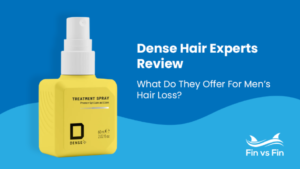
Dense Hair Experts Review: What Do They Offer for Men’s Hair Loss?
Dense Hair Experts Overview Price: £59.99 (or £47.99 on subscription) Prescription products: Finasteride, dutasteride OTC products: Minoxidil, shampoo, conditioner, vitamins, styling products Active ingredients: Finasteride, dutasteride, minoxidil Potential side effects: Itching, redness, flaking Who it’s best for: Individuals experiencing male pattern baldness Go to Site→
